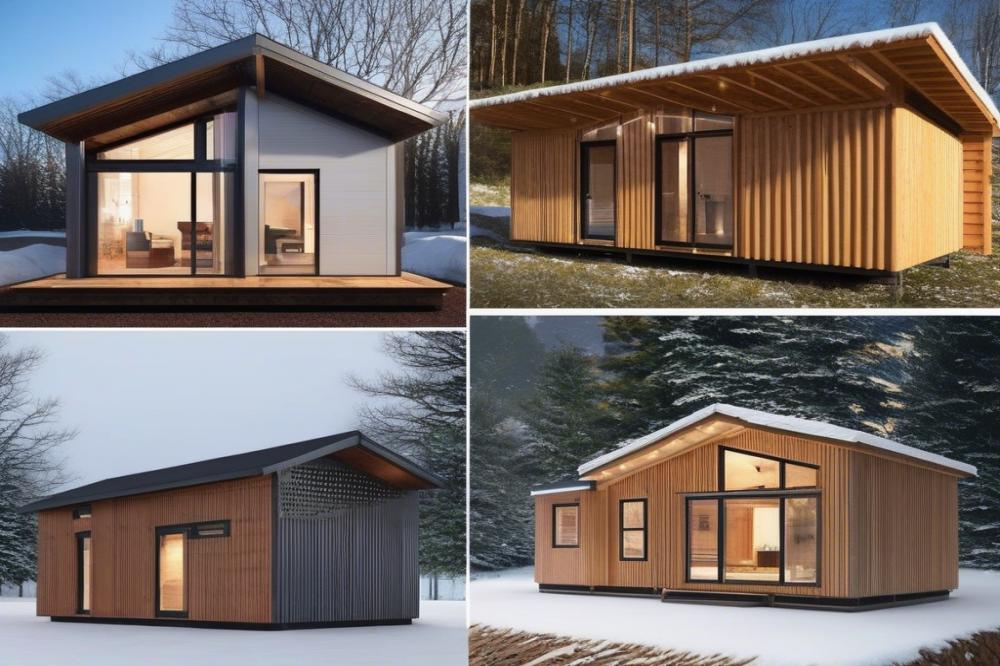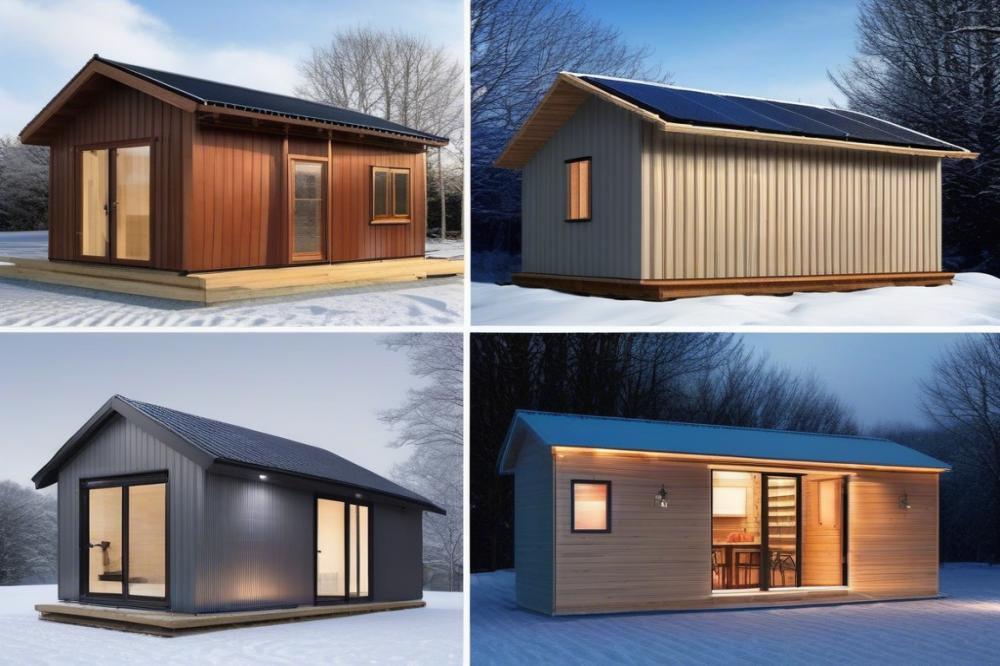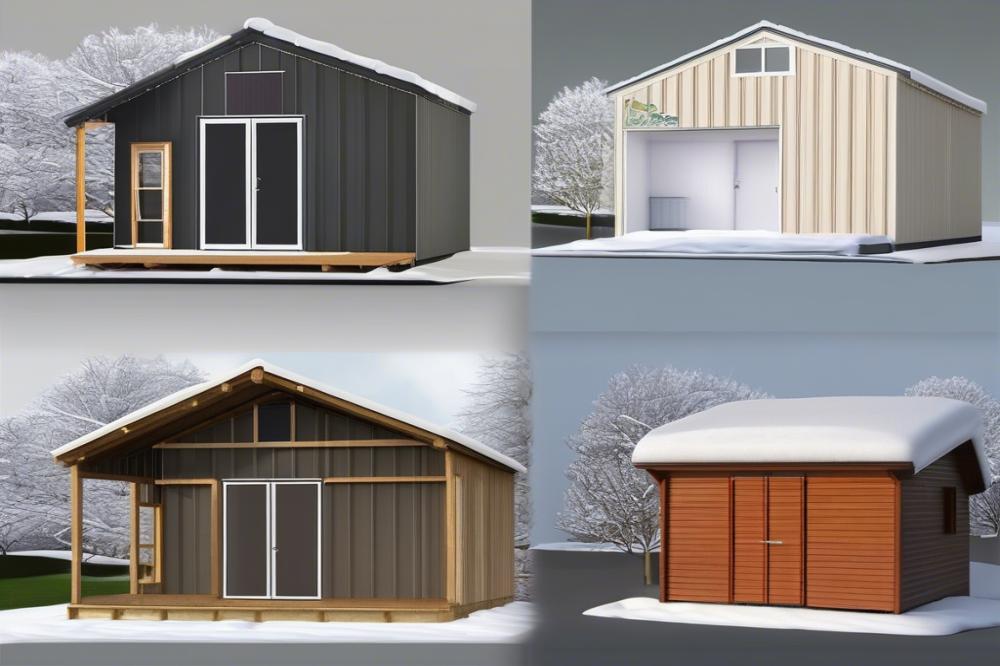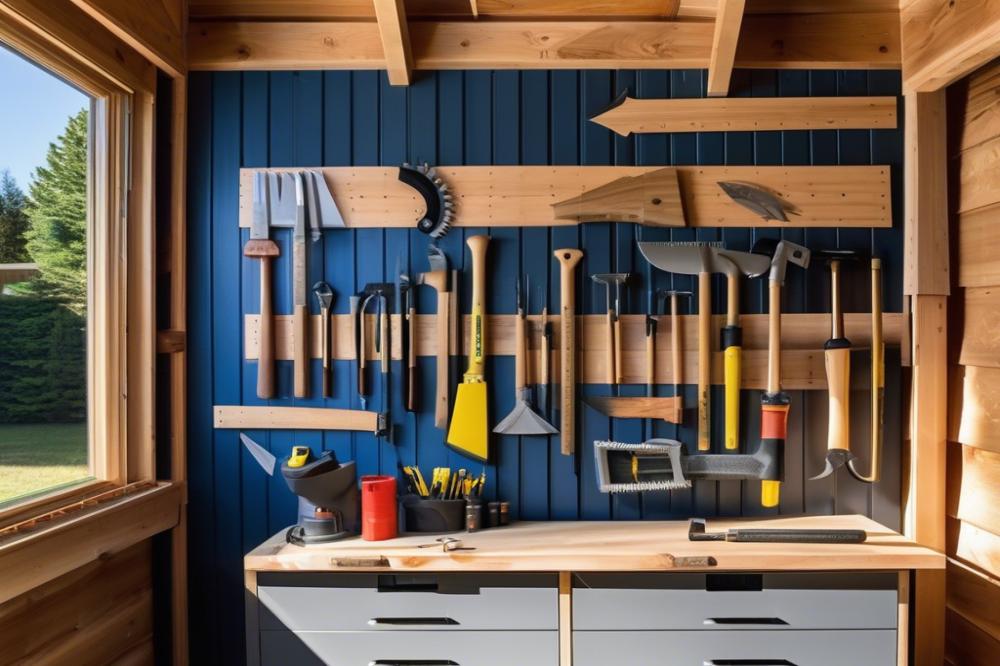Understanding the Importance of Insulating Your Shed
Your shed can be a valuable space for various activities throughout the year. However, many people overlook the significance of proper insulation. Insulating your shed plays a crucial role in maintaining a comfortable environment regardless of the season. temperature control becomes essential, especially during extreme weather conditions. Without insulation, sheds can turn into hotboxes in the summer and frigid iceboxes in the winter, making them less usable.
There are numerous benefits associated with insulating your shed. First, energy efficiency improves significantly. When the interior temperature is regulated, less energy is required for heating in winter and cooling in summer. This reduced energy consumption not only saves money but also has a positive impact on the environment. Additionally, proper insulation aids in moisture prevention, which helps protect your tools, equipment, and any stored items from humidity and mold.
Various insulation materials are readily available, making it easier than ever to embark on a DIY insulation project. From traditional fiberglass batts to modern foam board and spray foam, each type comes with distinct advantages. Some materials even provide added benefits like soundproofing, which can be quite useful if your shed doubles as a workshop or relaxation space. Ventilation is another vital component when considering insulation. It helps maintain air quality and prevents stale air from lingering, promoting a healthier environment.
In conclusion, insulated sheds can be inviting spaces for year-round usability. Whether for hobbies, storage, or simply enjoying the outdoors, taking the steps to insulate can transform your shed into a comfortable retreat.
Understanding shed insulation

Insulation plays a vital role in maintaining a shed’s interior climate. Its main purpose is to regulate temperature, making your space more comfortable for various activities. When properly installed, insulation can keep your shed warm in winter and cool during summer. This means both hobbyists and DIY enthusiasts can use their sheds all year round.
temperature control is critical for any shed, especially if you store sensitive items or spend time working inside. Insulation materials like fiberglass, foam board, and reflective barriers help block heat transfer. Such barriers prevent excessive heat from entering on hot days and stop warm air from escaping when it’s cold. This leads to better energy efficiency, which can save you money if you use heaters or cooling systems.
Moisture prevention also adds to a shed’s longevity. Excessive moisture can lead to mold and mildew, which damage insulation and items inside. Ventilation plays a key role here. Proper airflow combined with insulation keeps humidity levels in check, protecting your belongings. A well-ventilated shed can work wonders, especially after rain or snow.
Several applications call for insulation in a shed. Walls, ceilings, and floors are the primary areas needing attention. Insulating the roof can dramatically reduce heat loss, while floor insulation minimizes heat flow from the ground. Every inch counts when it comes to shed heating and cooling. Soundproofing can also be beneficial, particularly for busy workspaces or creative areas.
DIY insulation projects can be rewarding. Most homeowners can manage this task with basic tools and materials. Small investments in time and resources can lead to long-term comfort and utility. Overall, insulated sheds not only become more usable but also enhance the overall experience of working or relaxing within them.
Choosing the Right Insulation Materials

When it comes to insulating your shed, several common materials can do the job. Fiberglass, foam boards, and cellulose each have their unique properties. Understanding these insulation materials can help you make an informed decision about which is best for your needs.
Common Insulation Materials
Fiberglass is a widely used option. It consists of tiny glass fibers that trap air, providing excellent temperature control. Foam boards offer rigid insulation and are great for DIY insulation projects. They also have high R-values, indicating effective resistance to heat flow. Cellulose insulation, made from recycled paper products, is another eco-friendly choice. It provides soundproofing benefits but can settle over time, which may decrease its efficiency.
Factors to Consider
Several factors should guide your selection of insulation materials. The R-value is crucial because it measures how well the material resists heat transfer. Higher R-values equate to better energy efficiency. Moisture resistance is also important to prevent issues like mold or rot. Lastly, the cost can vary widely among these materials. Budget considerations will play a significant role in your final decision.
Pros and Cons of Each Material
Each type of insulation material has its advantages and disadvantages. Fiberglass tends to be affordable and easy to install. However, it can irritate the skin, and proper ventilation is important when using it. Foam boards provide strong insulation and are great for shed heating and cooling. On the downside, they can be more expensive and may require professional installation in some cases.
Cellulose is not only eco-friendly but also offers excellent soundproofing. Its main drawback is its susceptibility to moisture. Without perfect ventilation, it might not hold up well in humid conditions. While all materials can work well for year-round usability, carefully evaluating these factors will help ensure your shed remains comfortable through all seasons.
DIY Insulation Techniques

Insulating your shed can make it usable all year round. The right materials can help with temperature control, shed heating, and shed cooling. You can accomplish this yourself! Below is a simple step-by-step guide to help you through the process.
Step-by-Step Guide to Insulating Your Shed Yourself
First, gather your tools and materials. You will need insulation materials such as foam boards or fiberglass batts. Besides that, have a utility knife, measuring tape, a staple gun, and safety gear like gloves and goggles. Additionally, a vapor barrier can help with moisture prevention, which is crucial for the long-term health of your shed.
Next, measure the walls, floors, and ceiling of the shed. Cut your insulation materials to fit snugly in the spaces. It’s important to avoid gaps. When you have your insulation cut to size, insert it into the spaces between the studs or beams. Using your staple gun, secure the insulation in place.
After that, focus on the floors and ceiling. Proper insulation on these surfaces enhances energy efficiency. Use rigid foam insulation for the floor if you want a tougher material. Make sure it fits securely. Apply a vapor barrier on the floor to prevent moisture. The ceiling can also benefit from batts or foam, depending on your choice.
Tips for Effective Installation
Sealing gaps is vital. Any unsealed areas can let air in and out, undermining your hard work. Use caulk or spray foam to seal any cracks around windows and doors. This helps improve energy efficiency by preventing drafts.
Ventilation is also important. Without it, moisture can build up, leading to damage. Consider adding vents to your shed to help with airflow. Good airflow moderates humidity levels, thereby improving moisture prevention.
Soundproofing is another benefit to think about. Insulation can help keep noise levels down if you use your shed as a workshop or creative space. Enjoy quiet sessions even if there’s hustle and bustle outside.
Lastly, the overall usability of your shed improves with effective insulating techniques. Whether it’s for storage or a hobby space, these suggestions ensure that you can enjoy your shed all year long, regardless of the weather outside.
Heating and Cooling Solutions for Your Shed

Overview of Shed Heating Options
Shed heating can make your space comfortable during chilly months. Electric heaters are a popular choice because they are easy to use. Plug them in, set the temperature, and you’re good to go. They provide consistent warmth without needing complicated installations. Wood stoves present a different vibe. A traditional choice, they create a cozy atmosphere, but you must manage the wood supply. Propane heaters offer portability. With a propane tank, you can easily move the heater wherever it’s needed. Each option has its pros and cons, depending on your shed’s size and your heating preferences.
Shed Cooling Solutions
Shed cooling strategies are vital as temperatures rise. Insulation materials play a key role in keeping the heat outside. Thick walls filled with foam or fiberglass can reduce heat transfer significantly. Consider adding fans for airflow. They help circulate air, making your shed feel more comfortable. Some might opt for portable air conditioning units. These units can cool down your space quickly during hot days. Remember to focus on adequate ventilation as well. It helps prevent moisture buildup, which can lead to mold growth.
Integrating Insulation with Heating and Cooling for Maximum Efficiency
Pairing insulation with your heating and cooling setup boosts energy efficiency. Proper insulation minimizes heat loss during winter and heat gain in summer. This balance saves money on energy bills over time. DIY insulation can also be an effective way to tackle this project if you’re handy. Implementing soundproofing measures can further enhance your comfort. No one wants to hear outside noise while working or relaxing in their shed. Effective temperature control will allow for year-round usability, making your shed a great retreat. Select materials wisely and think about how they work together to create a comfortable environment.
Ensuring Proper Ventilation
Proper ventilation plays a vital role in maintaining an insulated shed. This feature helps regulate temperature and prevents moisture buildup. Without adequate airflow, humidity levels can rise, leading to mold and mildew. These factors can damage your belongings and compromise the structure of the shed.
The Importance of Ventilation in an Insulated Shed
Air circulation is key to ensuring year-round usability. In winter, trapped moisture can freeze and cause damage. During the hot months, ventilation assists in cooling the space, making it more comfortable. Ventilation also helps balance the effects of insulation materials. This balance is crucial for energy efficiency, as it minimizes unnecessary heating or cooling demands.
Methods for Promoting Airflow to Prevent Moisture Buildup
There are several straightforward methods to enhance ventilation. Installing vents near the peak of the shed can allow warm air to escape. Incorporating an exhaust fan provides an extra boost for airflow when needed. You might also consider adding windows that can be opened. Natural airflow through these openings brings fresh air in and pushes stale air out. Using rooftop vents is another practical solution. They can help create a chimney effect that pulls air upward and encourages circulation.
Balancing Insulation with Ventilation for Optimal Shed Performance
Finding the right balance between insulation and ventilation is essential for effective temperature control. Over-insulating can trap air and increase humidity levels. On the other hand, too much ventilation can undermine the benefits of insulation. A well-planned approach to DIY insulation includes leaving spaces for airflow. Additionally, consider soundproofing options that also maintain ventilation pathways. This care ensures your shed remains a pleasant environment, whether heating in winter or cooling in summer.
Additional Benefits of Insulation
Insulating a shed serves a purpose beyond mere comfort. It contributes to soundproofing, creating a peaceful environment both inside and outside. If noise is a concern, consider thick insulation materials. They can absorb sound and minimize outside disturbances, allowing for focused work or quiet relaxation.
Long-term cost savings are another significant benefit. A well-insulated space can lead to notable energy efficiency. By maintaining temperature control, you reduce the need for excessive heating in winter and cooling in summer. This not only cuts energy bills but also lessens your carbon footprint.
Using insulation materials wisely can prevent moisture buildup. Without proper moisture prevention, sheds can suffer from mold and mildew. This risk is decreased with effective insulation. Products designed for moisture resistance can help protect the structure and its contents over time.
Year-round usability is crucial. An insulated shed remains comfortable in all seasons. Whether you’re busy with DIY insulation projects, crafting, or simply enjoying hobbies, a controlled environment enhances your experience. Ventilation is also essential; it balances out moisture and keeps air fresh, limiting any stuffiness.
Consider what activities you plan to pursue. If your shed serves as a workshop, insulating it for shed heating in winter makes sense. Conversely, when summer arrives, shed cooling becomes important. Insulation dramatically impacts how you enjoy the space regardless of the weather.
Investing in insulation pays off not just in energy savings but also in comfort and functionality. Make the most of your shed year-round by ensuring it’s well-prepared for any activity you have in mind.
Wrapping It Up
Considering insulation for your shed is a step toward better all-season use. Proper insulation aids in temperature control, making the interior comfortable during both scorching summer days and chilled winter nights. Managing heat effectively is vital for anyone looking to utilize their space year-round. Such upgrades can also protect your tools and equipment from harsh weather.
Moisture prevention is another significant factor. Insulation helps to create a barrier against the elements, protecting your belongings from dampness. Nobody enjoys dealing with rusted tools or moldy materials, so a well-insulated shed becomes a valuable asset.
Reflect on how much you can enhance functionality and comfort by adding insulation. Whether it’s a simple DIY project or hiring a professional, the benefits are clear. Explore various insulation options that fit your needs and budget. Making these improvements can transform your shed into a cozy retreat or a productive workspace. Take the first step toward that upgraded space today!



